This step by step woodworking project is about how to build a a gable roof for the 16×12 pavilion. This is PART 2 of the wide gazebo project, where I show you how to build the gable structure. The roof has a 6:12 pitch. This structure is heavy duty, but please follow the building codes and hire a professional contractor if you don’t have the right skills to undertake the project on your own.
We recommend you to invest in the best materials you could afford. Therefore, you should buy weather-resistant lumber, such as pressure-treated lumber, cedar or redwood. If you use regular pine, I recommend you to apply the appropriate products to enhance its durability. Always take accurate measurements before adjusting the size of the components at the proper size. Drill pilot holes trough the components before inserting the wood screws, to prevent the wood from splitting. See all my Premium Plans HERE.
Made from this plan
16×12 Pavilion Roof – Free DIY Plans
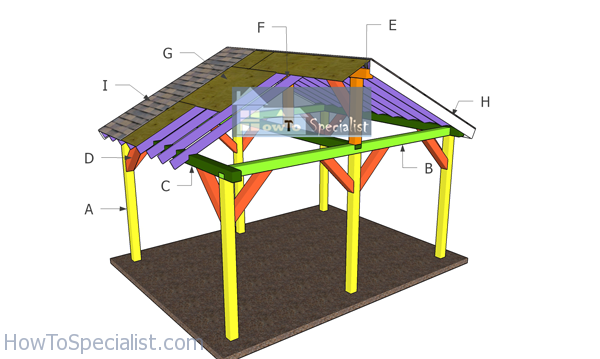
Building-a-16×12-gazebo
Materials
- F – 22 pieces of 2×6 lumber – 10 ft long RAFTERS
- G – 4 pieces of 1/2″ plywood – 48″x96″ long, 4 pieces – 48″x64″ long, 2 pieces – 24″x96″ long, 2 pieces – 24″x64″ long ROOF
- H – 4 pieces of 1×8 lumber – 121″ long, 2 pieces – 160″ long TRIMS
- I – 300 sq ft of tar paper, 300 sq ft of asphalt shingles ROOFING
- 22 pieces of 2×6 lumber – 10 ft
- 10 pieces of 1/2″ plywood – 4’x8′
- 4 pieces of 1×8 lumber – 12 ft
- 2 pieces of 1×8 – 14 ft
- 300 sq ft of tar paper, 300 sq ft of asphalt shingles
- 44 rafter ties
- 2 boxes of 1 1/2″ structural screws
- Screws for Strong ties
- wood glue, stain/paint
- construction glue
Tools
- Safety gloves, glasses
- Miter saw, jigsaw
- Chalk line, tape measure, spirit level, carpentry pencil
- Drill machinery and drill bits
Tips
- Add trims to the pavilion
- Secure the roofing slats to the structure with galvanized screws
Time
- One Week
How to build a gable pavilion roof
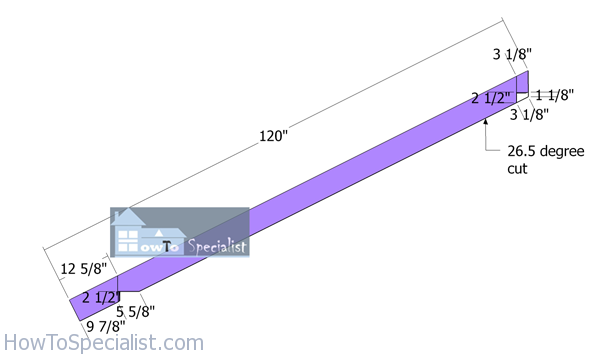
Rafters—gable-16-ft-wide-pavilion
Use 2×6 lumber for the rafters. Make 26.5 degree cuts to one end of the rafters and then make the birdsmouth cuts, as shown in the diagram. Mark the cut lines on the beams with attention and then get the job done, as shown in the diagrams.
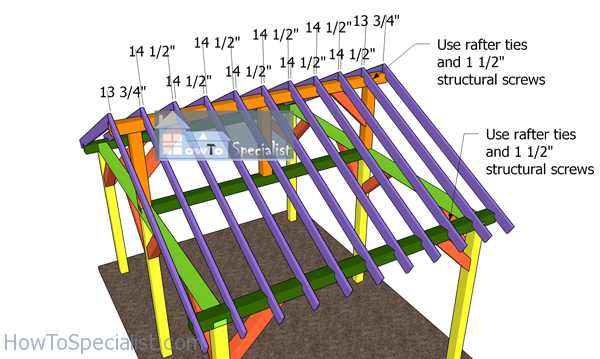
Fitting-the-rafters—16×12-gazebo
Fit the rafters to the top of the pavilion. Use the info from the diagram to space the rafters every 16″ on center. Use rafter ties and 1 1/2″ structural nails to lock the rafters to the top plates and to the ridge beam.
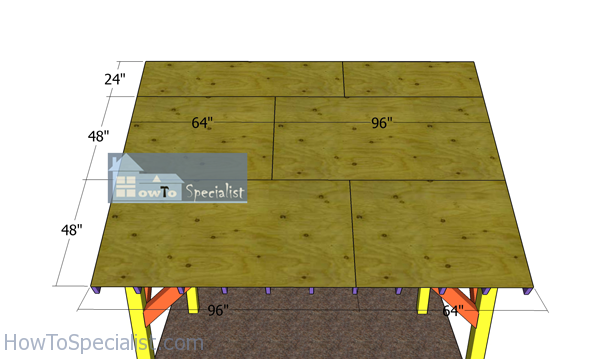
Fitting-the-roof-sheets
Use 1/2″ plywood for the roof sheets. Make cuts to the sheets and lay them on top of the roof structure. Leave no gaps between the sheets and align everything with attention. Drill pilot holes and insert 1 5/8″ screws, every 8″ along the framing.

How-to-fit-the-side-roof-trims
Use 1×8 lumber for the side roof trims. Align the edges flush and insert 2″ nails to lock them to the end of the rafters.
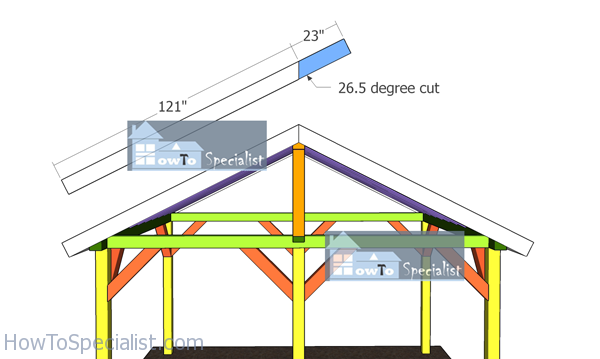
Front-and-back-gable-roof-trims
Use 1×8 lumber for the front and back roof trims. Make 26.5 degree cuts to one end of the trims. Attach the trims to the rafters and insert 2″ nails to lock them into place tightly. Add construction glue to the joint.
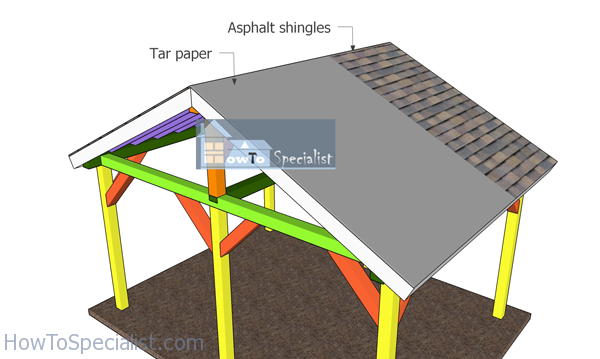
Fitting-the-roofing—16×12-pavilion
You could fit asphalt shingles to protect the pavilion, as it is a straight forward solution. Therefore, install roofing felt over the roofing sheets, making sure the strips overlap at least 2″. Secure the tar paper to the plywood sheets with roofing staples. Fit the side drip edges over the roofing felt, while the bottom drip edges should be fit under. Place a starting course at the bottom of the roof, before installing the asphalt shingles. Always read the manufacturing instructions before starting the installation, as there are several aspects that differ.
The first course should star with a 3 tab shingle, the second course with a 2 1/2 tab , the third course with a 2 tab, the forth course with a 1 1/2 tab, the fifth course with a 1 tab, the sixth course with a 1/2 tab. Repeat the process from the beginning, starting with the seventh course. Don’t forget that the shingles should overhang from the drip edge about a 1/4″. In addition, secure the asphalt shingles to the roof decking with tacks.

16×12-gable-pavilion—assembled
This pavilion is built on a sturdy 6×6 structure and it features a roof with a 6:12 pitch. You can adjust the slope of the roof to suit your needs. This backyard pavilion has a base of 22 ft x 16 ft outside post to outside post.

16×12-gable-pavilion—front-view
Last but not least, you need to take care of the finishing touches. Therefore, fill the holes with wood putty and then smooth the surface with sandpaper. Apply a few coats of paint or stain over the components to enhance the look of the shed and to protect the components from decay. Since you are here, you might as well take a look over my other pavilion plans, such as this beautiful 14×16 pavilion.
Thank you for reading my project about 16×12 rectangular pavilion plans and we recommend you to check out the rest of the projects. Don’t forget to LIKE and SHARE our projects with your friends, by using the social media widgets. SUBSCRIBE to be the first that gets our latest projects.


